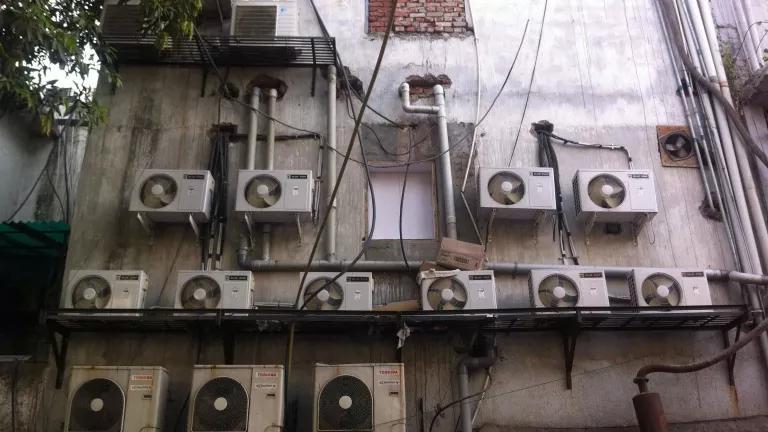President Obama and President Xi announced a breakthrough in bilateral cooperation on climate change today, by agreeing to work together on a phase-down of hydrofluorocarbons (HFCs) – the super potent heat-trapping chemicals used in refrigeration, air conditioning and other applications – under the Montreal Protocol, the successful 25-year old treaty that saved the ozone layer.
The two countries’ agreed:
Regarding HFCs, the United States and China agreed to work together and with other countries through multilateral approaches that include using the expertise and institutions of the Montreal Protocol to phase down the production and consumption of HFCs, while continuing to include HFCs within the scope of UNFCCC and its Kyoto Protocol provisions for accounting and reporting of emissions.
The White House press statement has more background:
HFCs are potent greenhouse gases used in refrigerators, air conditioners, and industrial applications. While they do not deplete the ozone layer, many are highly potent greenhouse gases. Their use is growing rapidly as replacements for ozone-depleting substances that are being phased out under the Montreal Protocol on Substances that Deplete the Ozone Layer. Left unabated, HFC emissions growth could grow to nearly 20 percent of carbon dioxide emissions by 2050, a serious climate mitigation concern.
The Montreal Protocol was established in 1987 to facilitate a global approach to combat depletion of the stratospheric ozone layer. Every country in the world is a party to the Protocol, and it has successfully phased out or is in the process of phasing out several key classes of chemicals, including chlorofluorocarbons (CFCs), hydrochlorofluorocarbons (HCFCs), and halons. The transitions out of CFCs and HCFCs provide major ozone layer protection benefits, but the unintended consequence is the rapid current and projected future growth of climate-damaging HFCs.
For the past four years, the United States, Canada, and Mexico have proposed an amendment to the Montreal Protocol to phase down the production and consumption of HFCs. The amendment would gradually reduce consumption and production and control byproduct emissions of HFCs in all countries, and require reporting in these areas. The amendment includes a financial assistance component for countries that can already access the Protocol’s Multilateral Fund, and leaves unchanged the reporting and accounting provisions of the UN Framework Convention on Climate Change and Kyoto Protocol on HFC emissions.
A phase-down agreement could cut out HFCs with a heat-trapping punch equivalent to as much as 90 billion tons of carbon dioxide over the coming decades. That’s equal to eliminating two years worth of all global greenhouse gas emissions.
The U.S-China agreement is a big deal. For the past four years, support has been growing among both developed and developing countries for tackling HFCs under the Montreal Protocol. This treaty has a proven formula that combines phase-down commitments by both developed and developing countries, with the latter receiving extra time and financial assistance. Every country in the world is a party to this treaty, and together they have already eliminated more than 97 percent of the chemicals that damage the earth’s fragile ozone layer.
Despite the widespread support, progress was slowed in past years by opposition from China, India, and Brazil. But this U.S.-China agreement is a strong signal that things are about to change. There have also been signs of change from India as well.
Diplomats gather in Bangkok on June 24th for a week of Montreal Protocol meetings. The U.S.-China agreement opens the door to starting real negotiations on an HFC phase-down. And maybe even to sealing a deal at the Montreal parties’ annual meeting in October.
In the past, when all countries were ready to negotiate, phase-down agreements have been hammered out very quickly. I’ll be in Bangkok and will keep you posted!
Note: This post reflects a correction to properly attribute the China-U.S. agreement and the White House statement.



